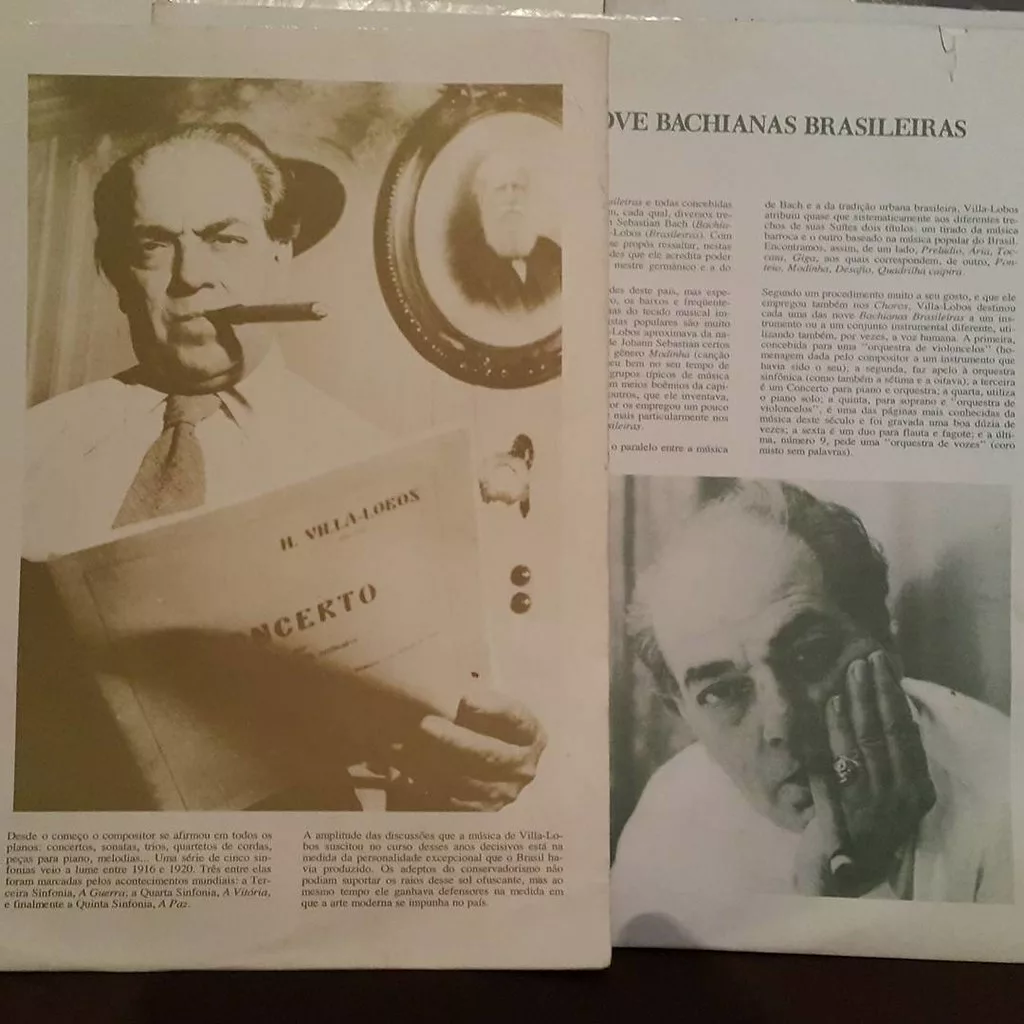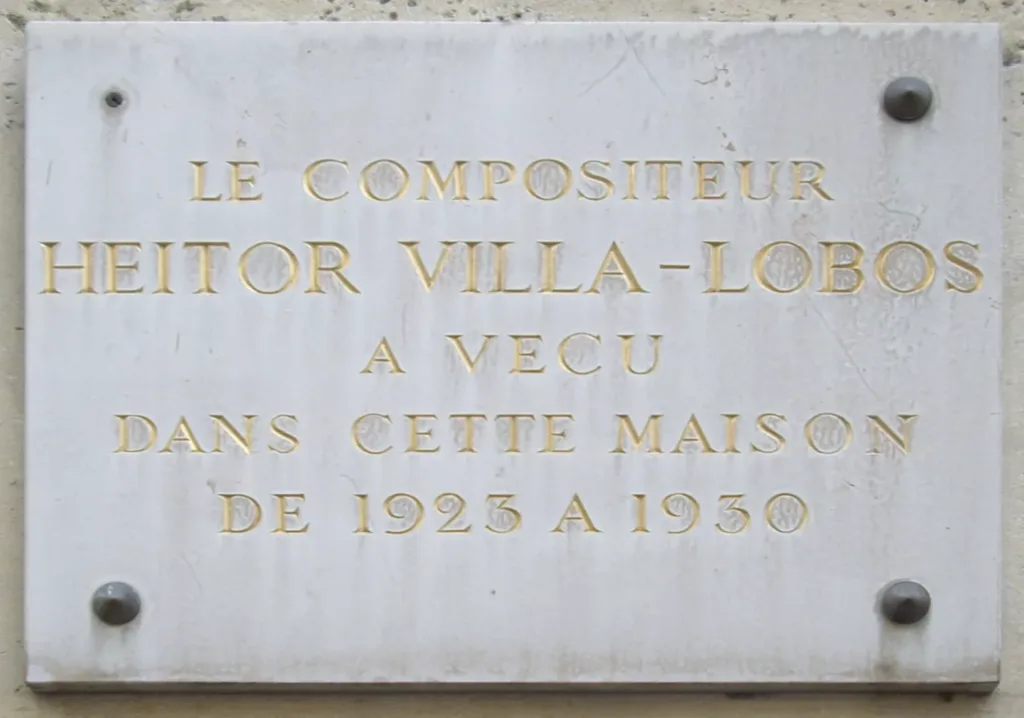In the enchanted realm where melodies dance like fireflies at night, one name shines brighter than the others: Heitor Villa-Lobos (1887 – 1959), the Bach of Brazil. A prolific master of string instruments (including strings and guitar) and unconventional harmony, his guitar compositions are not mere notes on paper; they live, breathing stories that whisper passion and desire.
Enter a world where every vibration carries the weight of history and innovation, where Villa-Lobos’ fingertips caress the guitar’s soul, shaping it into a vessel of beauty and emotion. As we travel through the maze of chords and arpeggios that Villa-Lobos created with such finesse, we unravel the threads that connect his genius to the very fabric of the classical repertoire.
The delicate balance between tradition and revolution and the echoes of Brazilian rhythms interwoven with European influences are the hallmarks of a musical legacy that continues to shape and inspire contemporary guitarists worldwide. Join us as we delve into the heart of Villa-Lobos’ creations, exploring how his innovative spirit left an indelible mark on the landscape of classical guitar music.
Villa-Lobos: the master of stringed instruments
Villa-Lobos was a Brazilian composer and conductor who revolutionized classical guitar music in the 20th century. His innovative composition approach and deep understanding of the instrument’s capabilities have made him a revered figure among guitarists worldwide. His works are characterized by their rich harmonies, intricate melodies, and rhythmic complexity.
His speed in creating new compositions (he stated, “I can compose as well while watching a baseball game.“), made him famous as the “Bach of Brazil.” Still, unlike the unsurpassed master of polyphony who focused on a specific style, Villa-Lobos allowed himself to be influenced by his time and by the countless styles that, after the Universal Exhibitions in Paris (ca. 1900), began to spread like wildfire around the world.

Creating stories through melodies: the compositional style of Villa-Lobos
Villa-Lobos had a unique ability to create vivid musical narratives through his compositions. Each track tells a story, evoking emotions and painting images in the listener’s mind. Whether it is the melancholy longing (though interspersed with a moment of joyful hope in E Major) of “Prelude No. 1” or the vibrant energy of “Chôros No. 1,” Villa-Lobos’ music transports us to different worlds.
Colorful harmonies and unconventional chord progressions characterize his compositional style. He has often incorporated elements of Brazilian folk music, such as samba and choro, into his compositions, giving them a distinct flavor that sets them apart from the traditional classical guitar repertoire.
His repertoire also includes the celebrated Twelve Etudes for Guitar dedicated to Andrés Segovia, composed in Paris in 1929 and an integral part of modern performers’ educational and concert heritage. Their variety, elaboration, and ability to exploit the full expressiveness of the instrument have made them highly sought after and studied for the refinement of technique.
A harmonic fusion: Brazilian rhythms and European influences in the music of Villa-Lobos
Villa-Lobos’ music is a beautiful fusion of Brazilian rhythms and European influences. Growing up in Brazil exposed him to a rich tapestry of musical traditions, which he skillfully blended with his classical training.
His compositions are full of syncopated rhythms, intricate counterpoints, and lush harmonies that reflect the vibrant spirit of Brazil. At the same time, his music is also influenced by European composers such as Bach (to whom, among other things, he dedicated the “Bachianas Brasileiras,” a set of nine pieces inspired by the Baroque master’s style) and the “impressionist” genius Debussy, with their complex harmonic language and expressive melodies.
The guitar as a vessel of beauty and emotion in the hands of Villa-Lobos
Villa-Lobos had an intimate relationship with the guitar. He understood their unique qualities and exploited them to their full potential. The guitar became a medium for expressing beauty and emotion in his hands.
His compositions show the instrument’s versatility, exploring its various timbres and textures. From delicate arpeggios to thunderous chords, Villa-Lobos pushed the boundaries of what was thought possible with the guitar.
Tradition vs. innovation: Villa-Lobos’ approach to classical guitar repertoire
Villa-Lobos was both a traditionalist and an innovator. He respected the classical guitar repertoire that had preceded him but also tried to push it forward into new territories.
He expanded the instrument’s technical possibilities by introducing new techniques such as harmonics, glissando, and percussive effects. His compositions challenged traditional notions of form and structure, often blurring the boundaries between different musical genres.
Villa-Lobos’ influence on contemporary guitarists around the world
Villa-Lobos’ impact on contemporary guitarists cannot be overstated. His compositions have become staples in the classical guitar repertoire, studied by aspiring musicians worldwide.
His innovative approach to composition has inspired countless guitarists to explore new possibilities with their instruments. His use of Brazilian rhythms has also impacted other genres, such as jazz and world music.
Exploring the labyrinth of chords and arpeggios in the creations of Villa-Lobos
Villa-Lobos’ compositions are a treasure trove of intricate chords and arpeggios. Exploring his music is like journeying through a labyrinth, where each turn reveals new harmonic landscapes.
His use of extended chords and complex voicings creates a rich tapestry of sound that captivates the listener. The guitar becomes an orchestra in his hands, capable of producing a wide range of colors and textures. The most famous example is undoubtedly that of Etude No. 1, a dense arpeggio that, starting from an E minor chord, expands an unusual, almost ethereal harmonic progression that, after a long ascending path, is abruptly interrupted by a swift scalar passage that returns to the arpeggiated formula for the closing phase of the etude.

Villa-Lobos’s legacy: shaping the landscape of classical guitar music
Villa-Lobos’ legacy continues to shape the landscape of classical guitar music. His compositions have become cornerstones of the repertoire, performed by guitarists in concert halls worldwide.
His innovative spirit and bold exploration paved the way for future guitarists to push the boundaries. His influence can be heard in the works of contemporary composers who continue to build on his legacy.
The enduring magic of Villa-Lobos’ musical genius.
The musical genius of Villa-Lobos is timeless. His compositions continue to enchant audiences with their beauty, complexity, and emotional depth.
His ability to create stories through melodies, his fusion of Brazilian rhythms with European influences, and his innovative approach to composition have left an indelible mark on classical guitar music. Villa-Lobos will forever be remembered as one of the greatest masters of string instruments.
If you like this post, you can always donate to support my activity! One coffee is enough!

